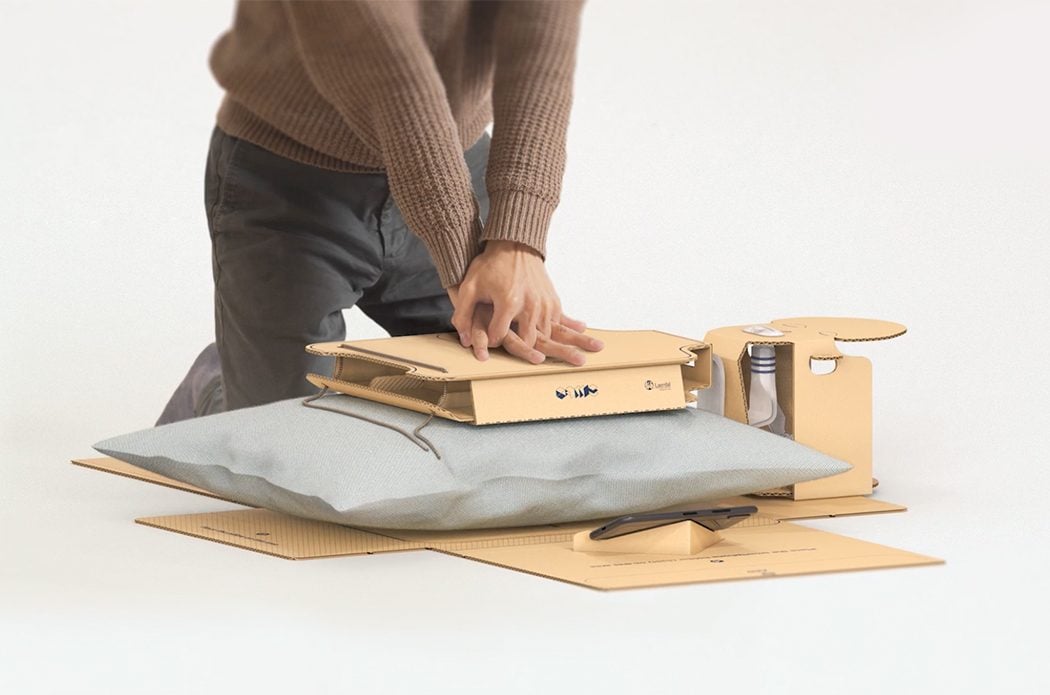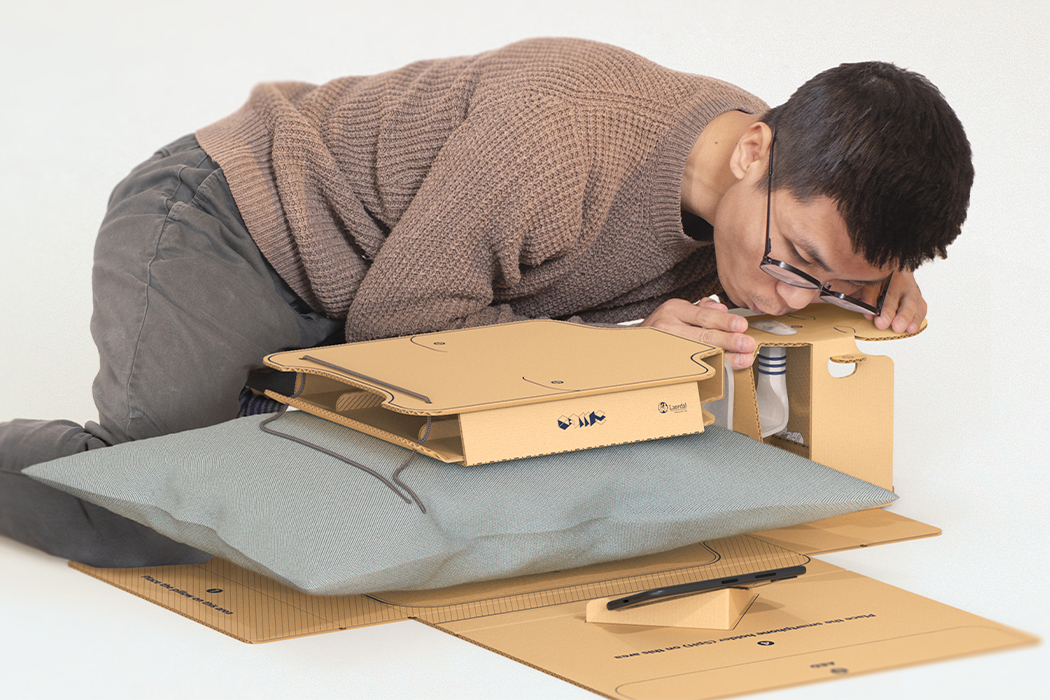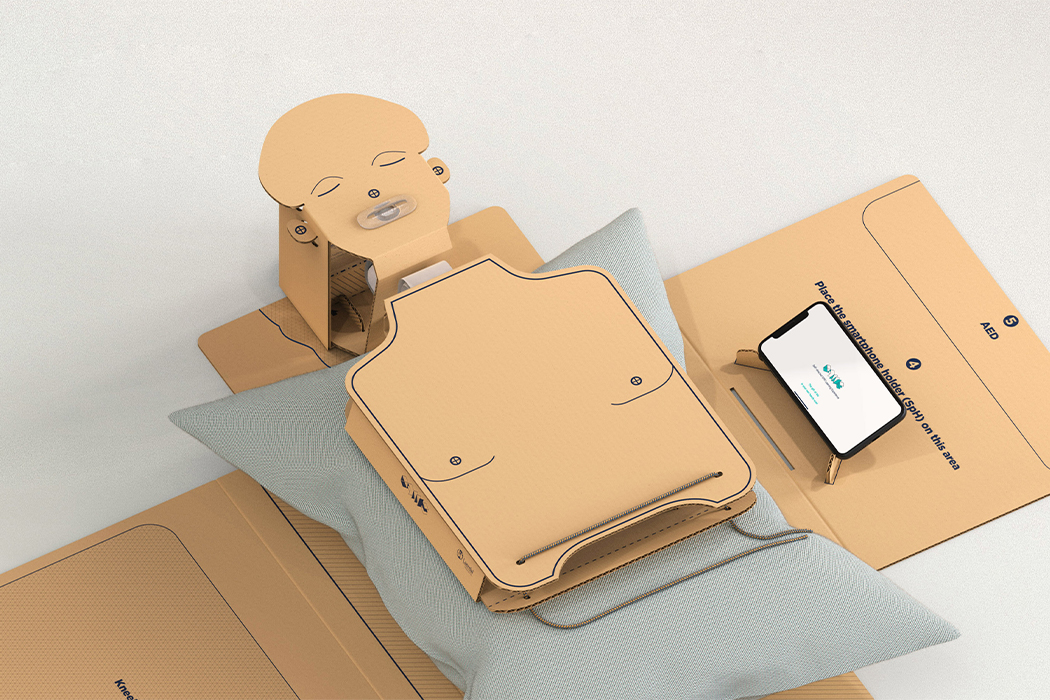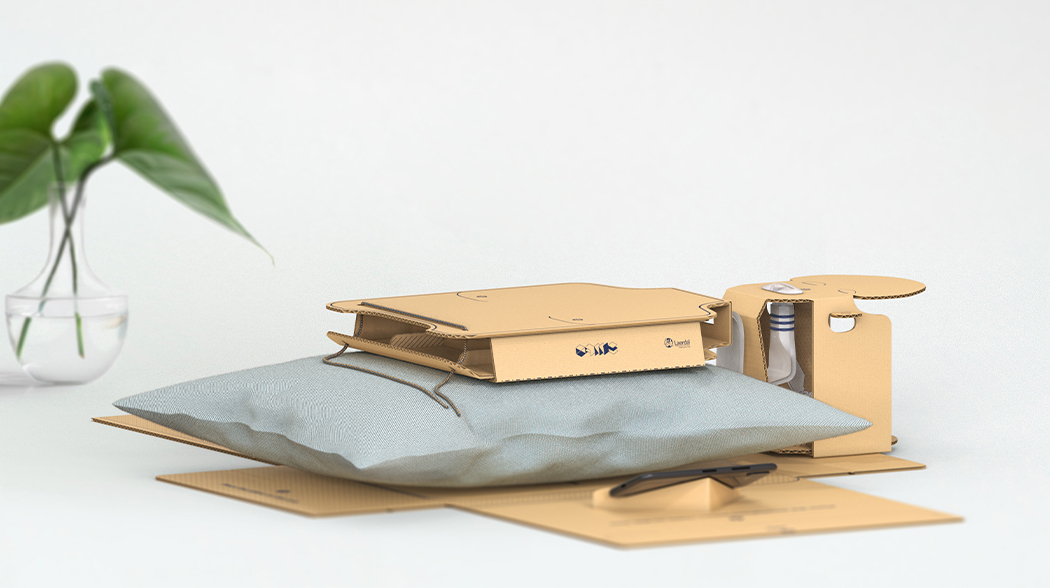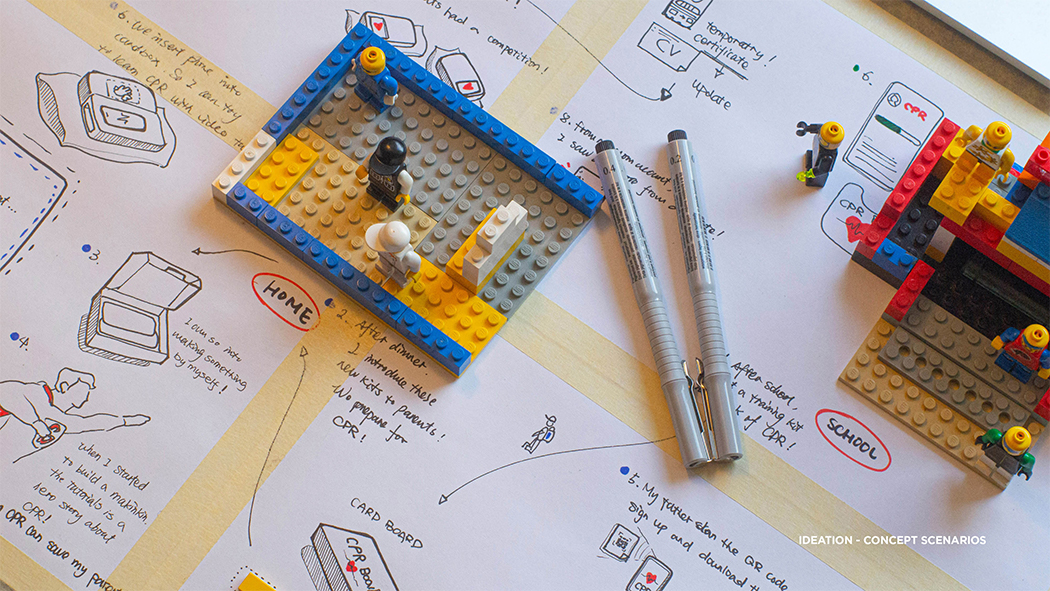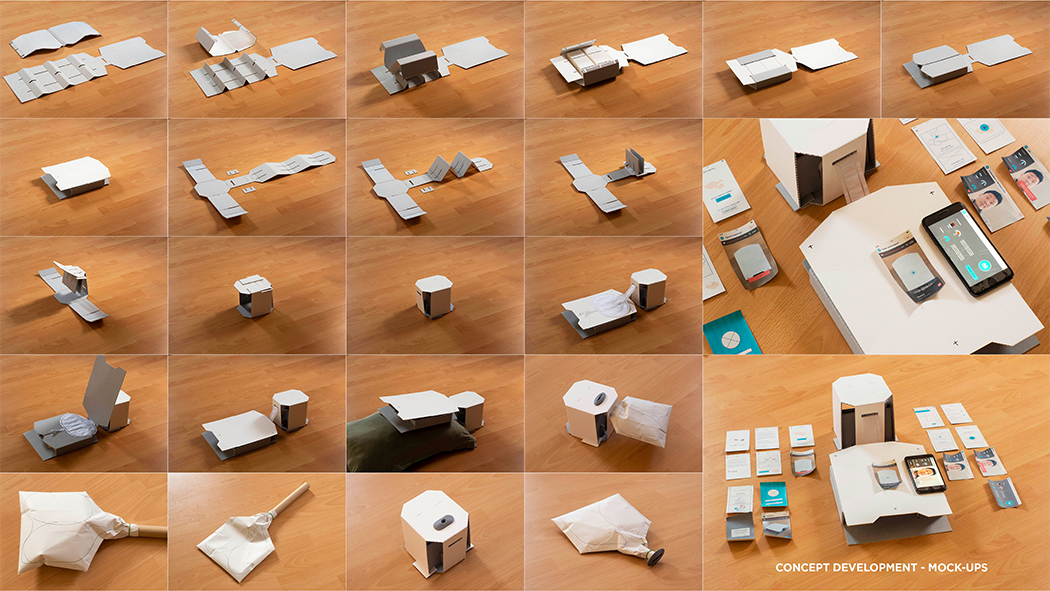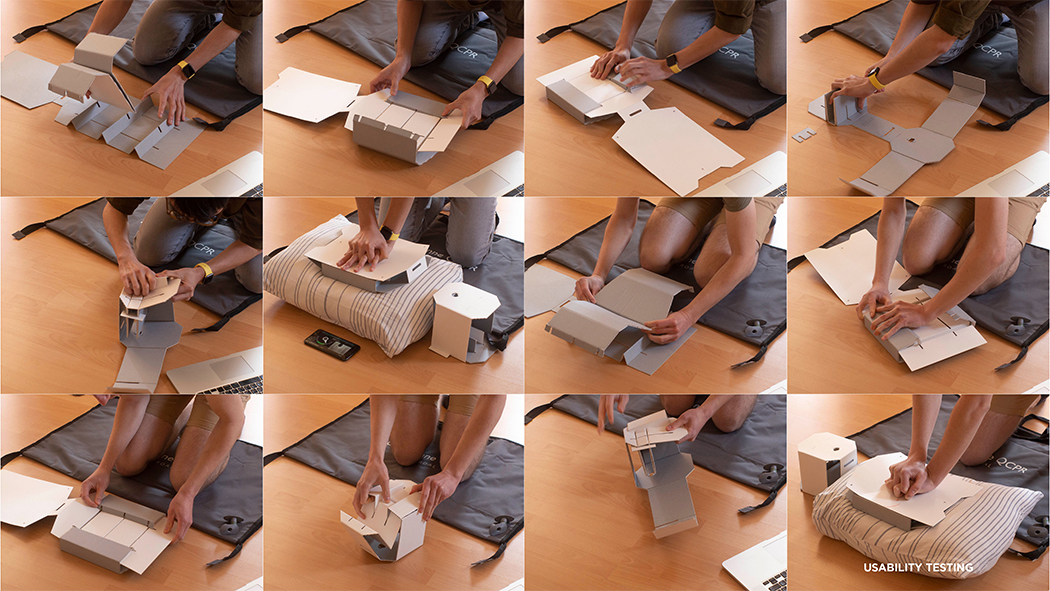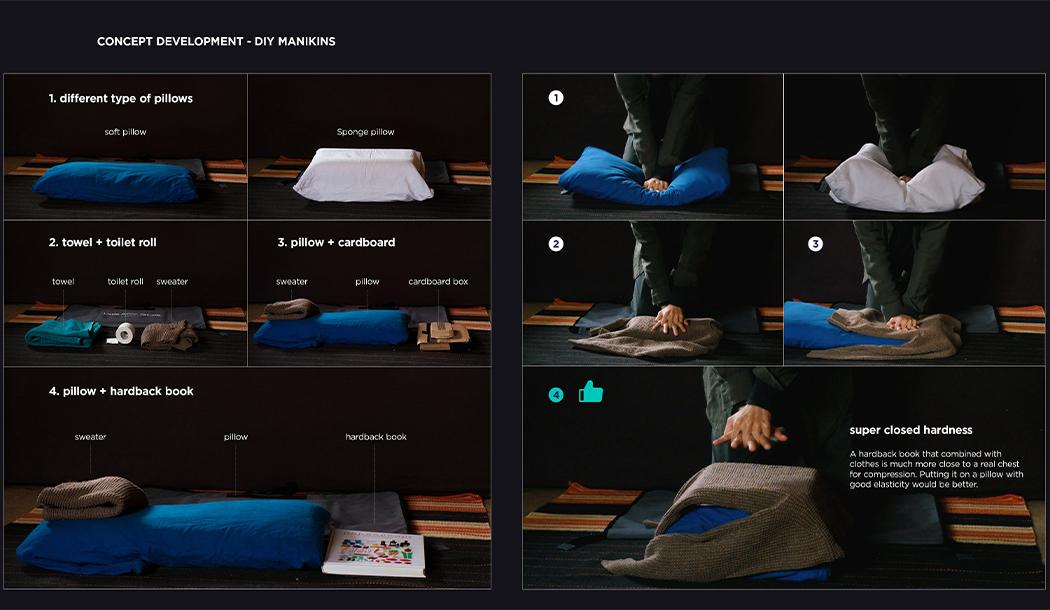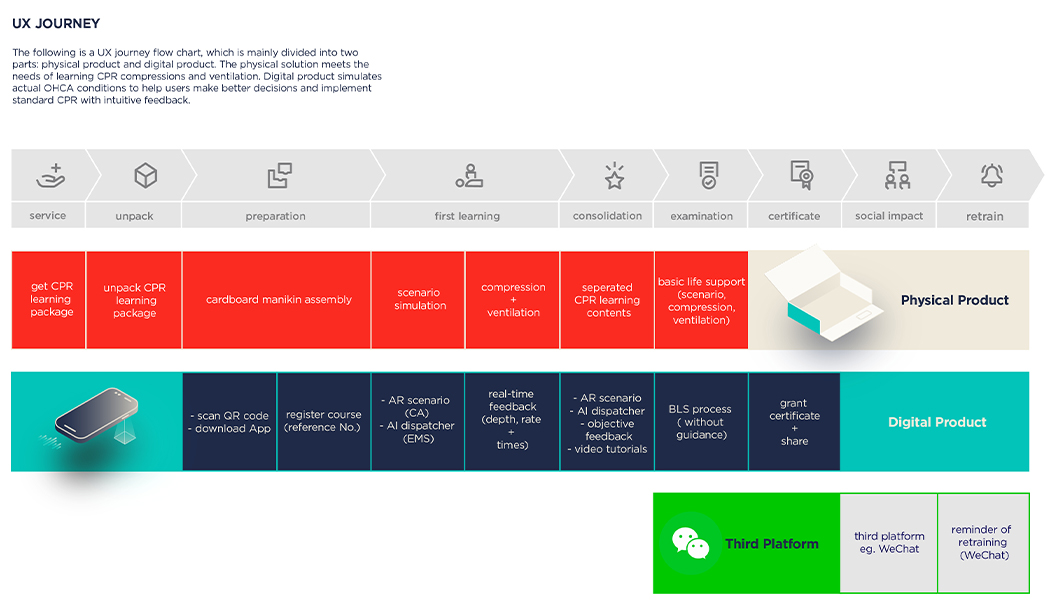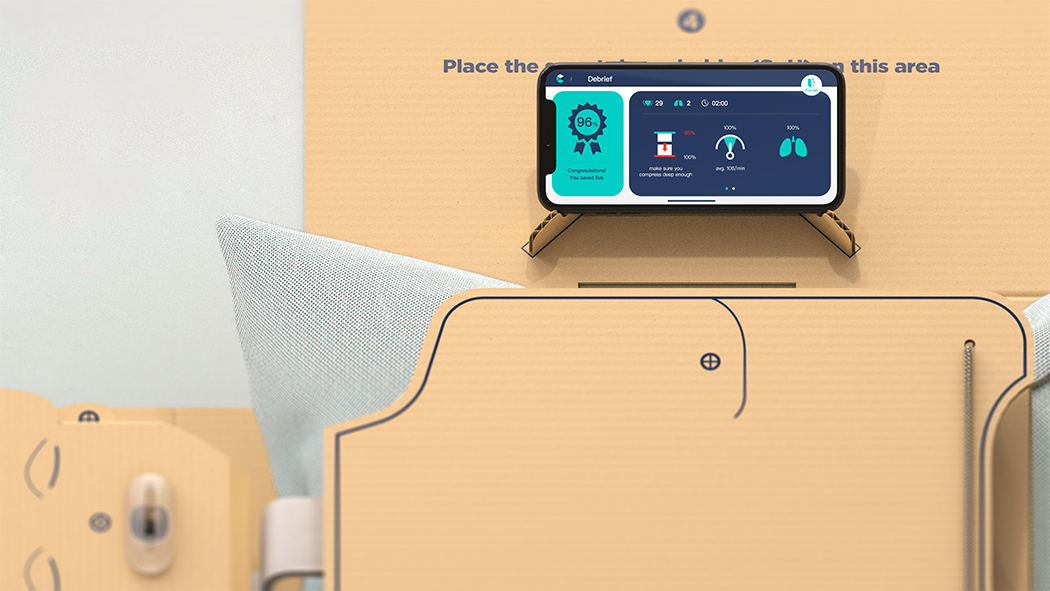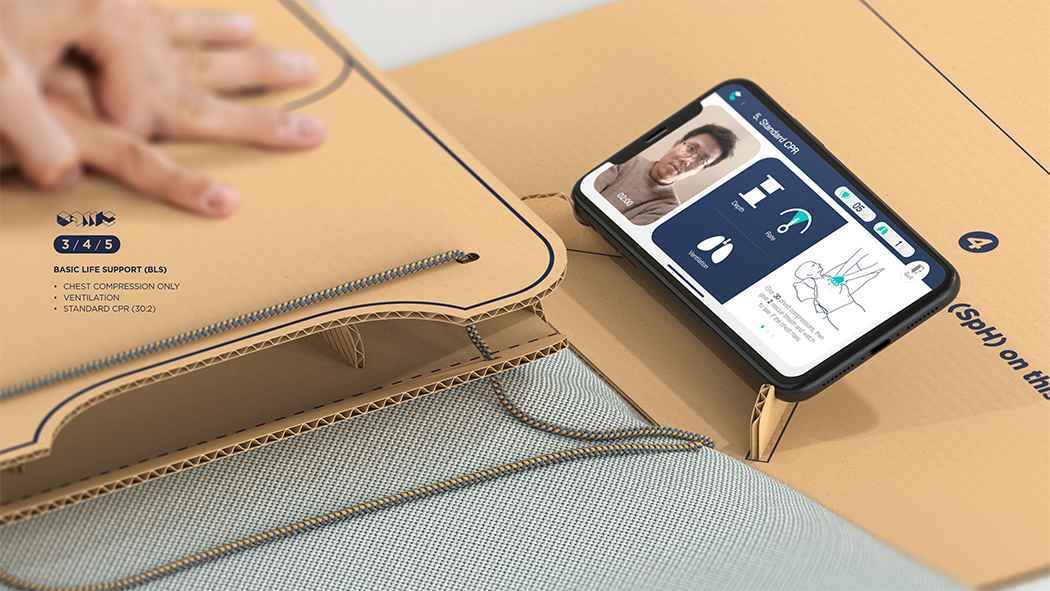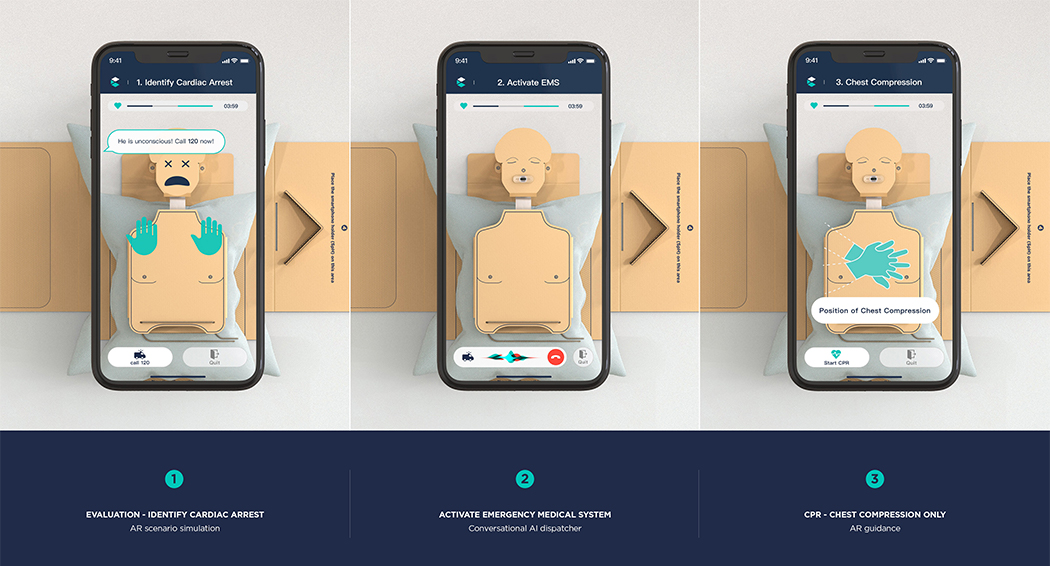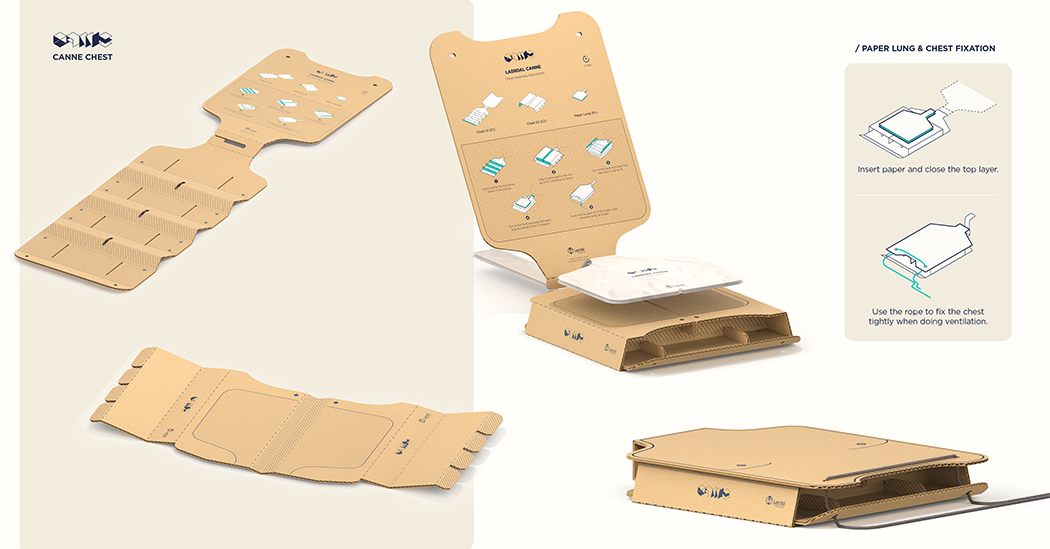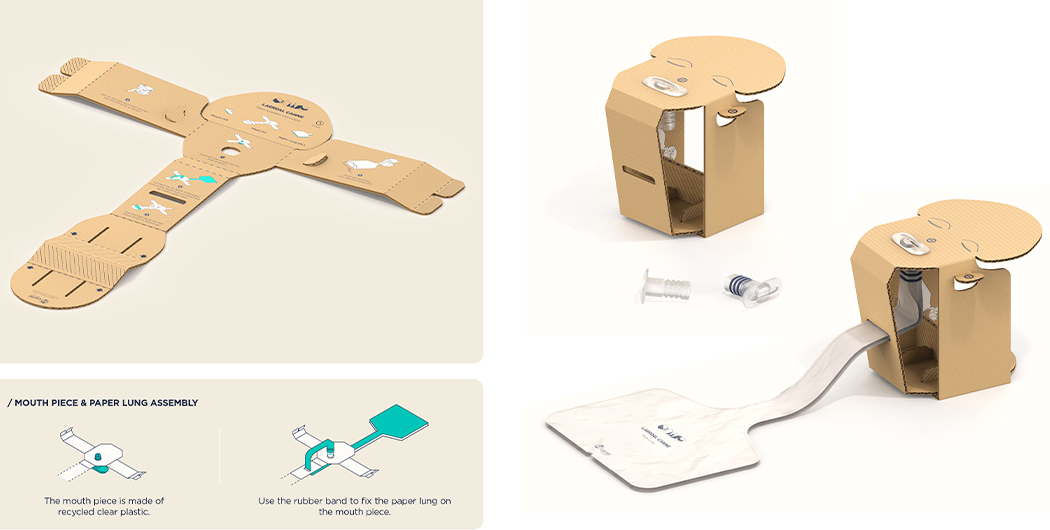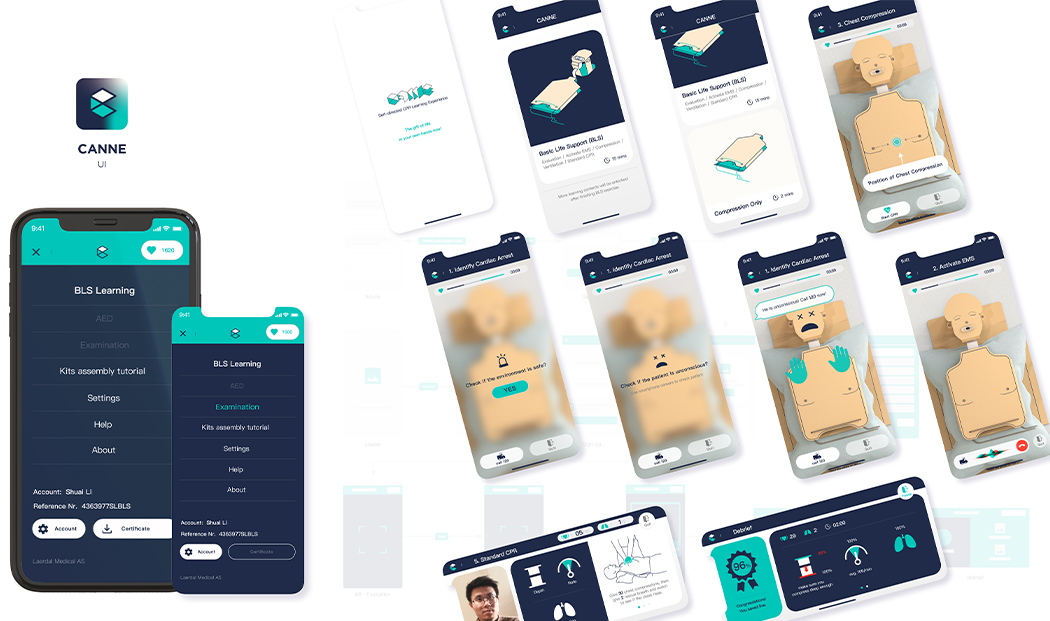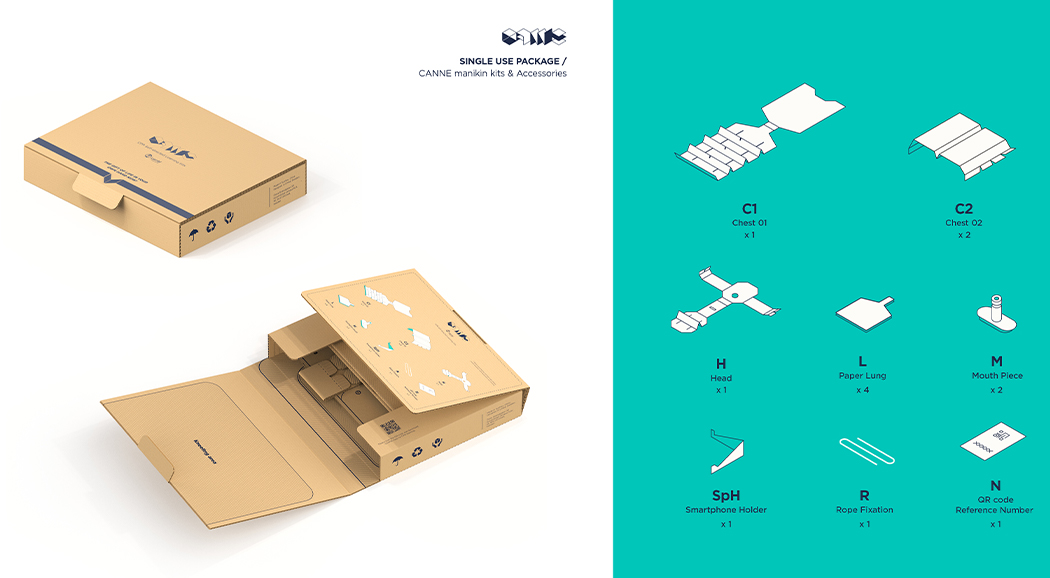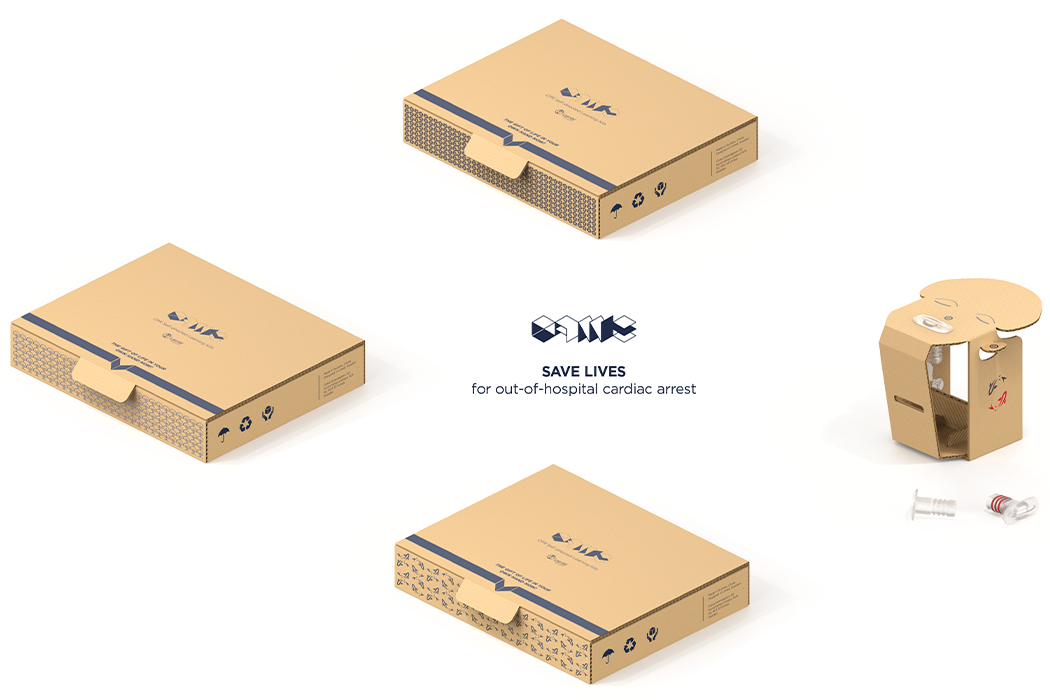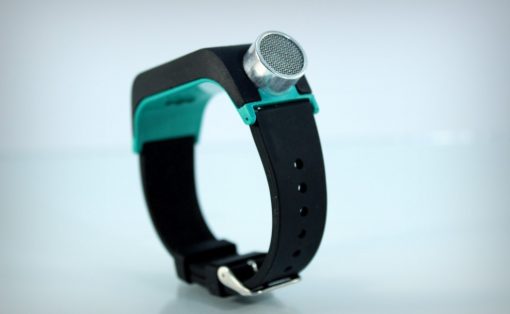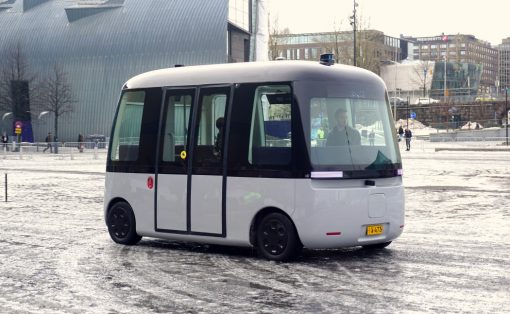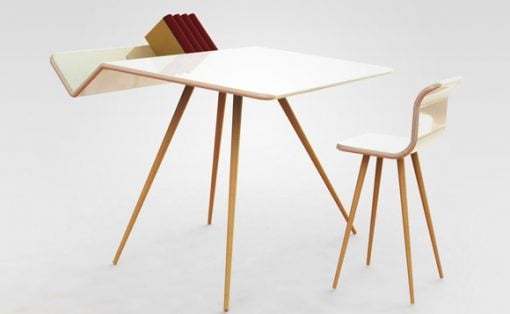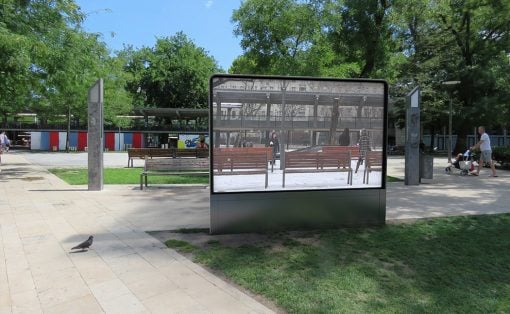More than 17 million people die from cardiac arrests each year in the world. In China alone, 540,000 people die each year from cardiac arrests, and the survival rate if it happens outside the hospital is less than 1% which is relatively lower than the other countries. So Shuai decided to create a medical design solution for this country that could make CPR, the most helpful and effective implementation to save cardiac arrest victims, a more accessible service. That is how CANNE came to be! It raises the survival rate of out-of-hospital cardiac arrests by addressing the local, societal and cultural needs.
He found out that implementation of CPR is extremely low, only 4.5% in large and medium-sized cities in China while a country like Sweden has a rate of 46-73%. He wanted his project to provide a flexible and efficient self-directed CPR learning solution to encourage more people to learn and improve their life-saving skills. CANNE addresses the problem of people not having the motivation to join a CPR course because of fewer opportunities, fewer interests, high cost, fast-paced lifestyle, and less awareness. CPR training also requires mannequins which are expensive and given the population of China, teaching cost is a big factor to keep in mind. The less qualified full-time instructors, short supply, and overworked skilled physicians were other significant barriers that were uncovered during research.
CANNE addresses these problems with its cost-effective, sustainable, and easily accessible design. It provides a self-directed CPR learning experience for every citizen and can be broken down into two parts – a corrugated cardboard Basic Life Support (BLS) learning kit and a BLS self-directed smartphone app. The kit allows people to learn, practice, and upgrade their CPR skills by teaching them about cardiac arrest identification, chest compression, and ventilation without having to join a class. The phone application enhances the learning experience by simulating cardiac arrest scenarios and emergency medical services (EMS), providing real-time feedback on compression and ventilation, as well as encouraging people to take an examination so they can be certified in basic life support skills!
This innovative medical design provides an ecosystem to motivate normal people to learn CPR at a low cost. It saves time and medical resources and has minimal requirements for you to learn it. Knowledge is power and giving CPR while waiting for emergency services to arrive can save lives if more people know how to do it.
Designer: Shuai Li from ‘Umeå Institute of Design
